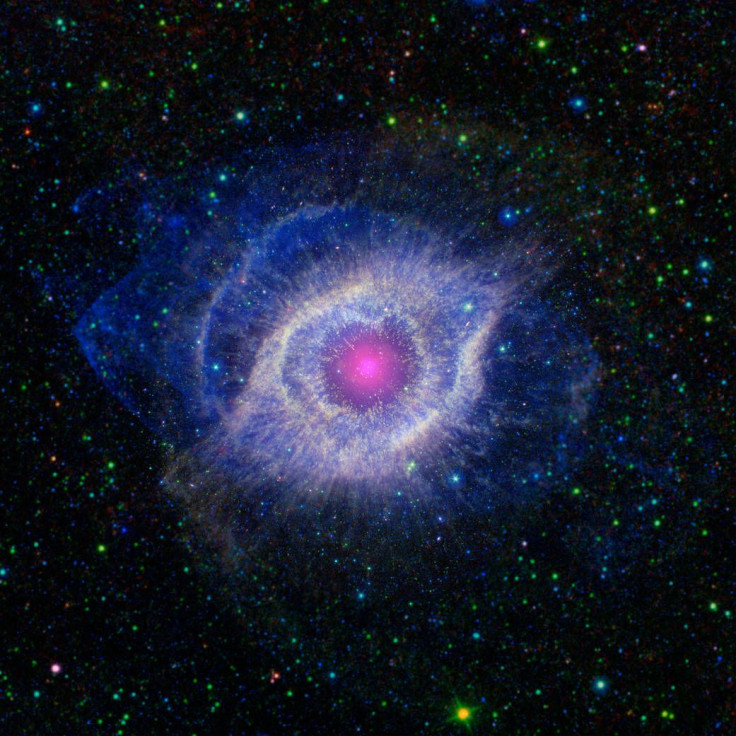Dying Star Produces Stunning Nebula That Looks Like An Eye

KEY POINTS
- The Helix Nebula was photographed using Spitzer and GALEX
- A dying star created the main structure of the Helix Nebula
- The Helix Nebula's central star will eventually turn into a white dwarf
The Helix Nebula is a bright cosmic structure that looks like a giant eyeball staring into space. According to NASA, the nebula was created by a star that’s nearing the end of its life cycle.
The Helix Nebula, which is classified as a planetary nebula, lies about 650 light-years from Earth in the constellation Aquarius. It is considered as one of the closest planetary nebulae to Earth.
NASA was able to take a stunning photo of the nebula by combining the images taken by its Spitzer Space Telescope and the Galaxy Evolution Explorer (GALEX), an orbiting ultraviolet space telescope used by the agency from 2003 to 2012.
Through the imaging capabilities of these two telescopes, NASA was able to capture the intense ultraviolet radiation being emitted by the nebula’s central star. As the radiation from the star pushes away and illuminates the surrounding clouds of gas and dust, it creates a stunning image that makes the nebula look like a giant cosmic eye.
“The intense ultraviolet radiation from the white dwarf heats up the expelled layers of gas, which shine brightly in the infrared,” NASA explained in a statement. “GALEX has picked out the ultraviolet light pouring out of this system, shown throughout the nebula in blue, while Spitzer has snagged the detailed infrared signature of the dust and gas in yellow A portion of the extended field beyond the nebula, which was not observed by Spitzer, is from NASA's all-sky Wide-field Infrared Survey Explorer (WISE).”
As explained by the agency, the nebula’s central star is already on the verge of dying. The radiation it’s emitting is being pumped out from its hot core. It then illuminates the outer layer being expelled by the star.
According to NASA, the star spent its life converting hydrogen into helium through nuclear fusion. Once it runs out of hydrogen, which is its energy source, it will turn to helium for its main fuel. Eventually, as the star depletes its sources of fuel, its outer layer will expand and leave behind a stellar core known as a white dwarf.
“When the hydrogen fuel for the fusion reaction runs out, the star turns to helium for a fuel source, burning it into an even heavier mix of carbon, nitrogen and oxygen,” NASA explained. “Eventually, the helium will also be exhausted, and the star dies, puffing off its outer gaseous layers and leaving behind the tiny, hot, dense core, called a white dwarf.”
© Copyright IBTimes 2025. All rights reserved.





















